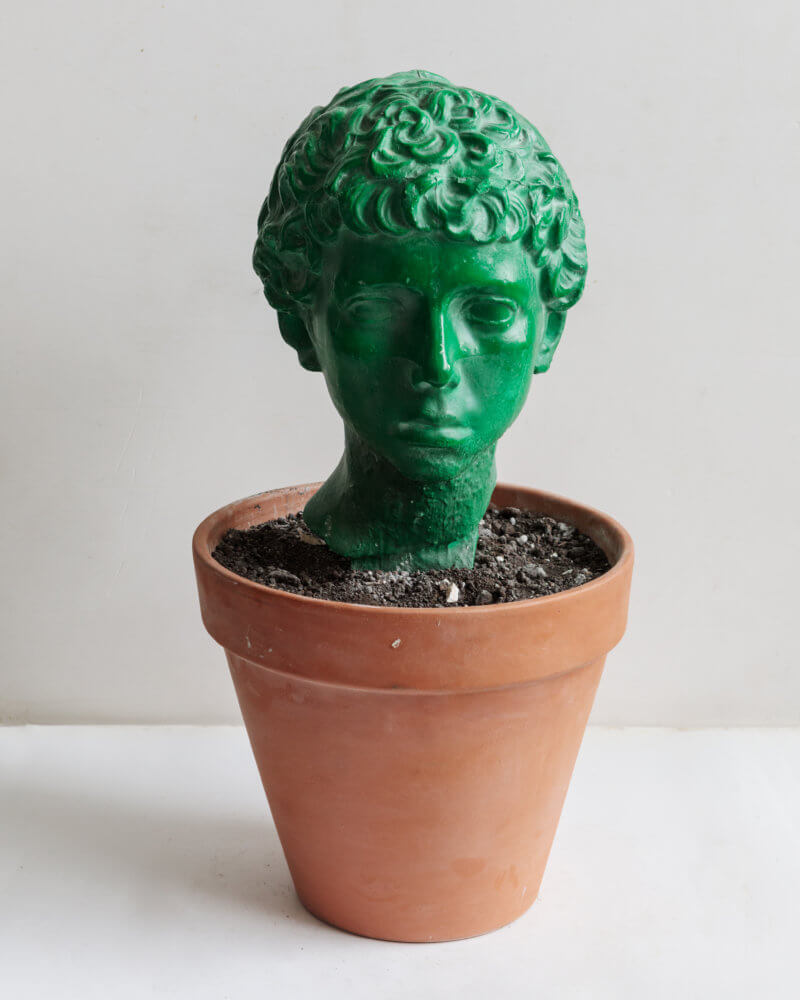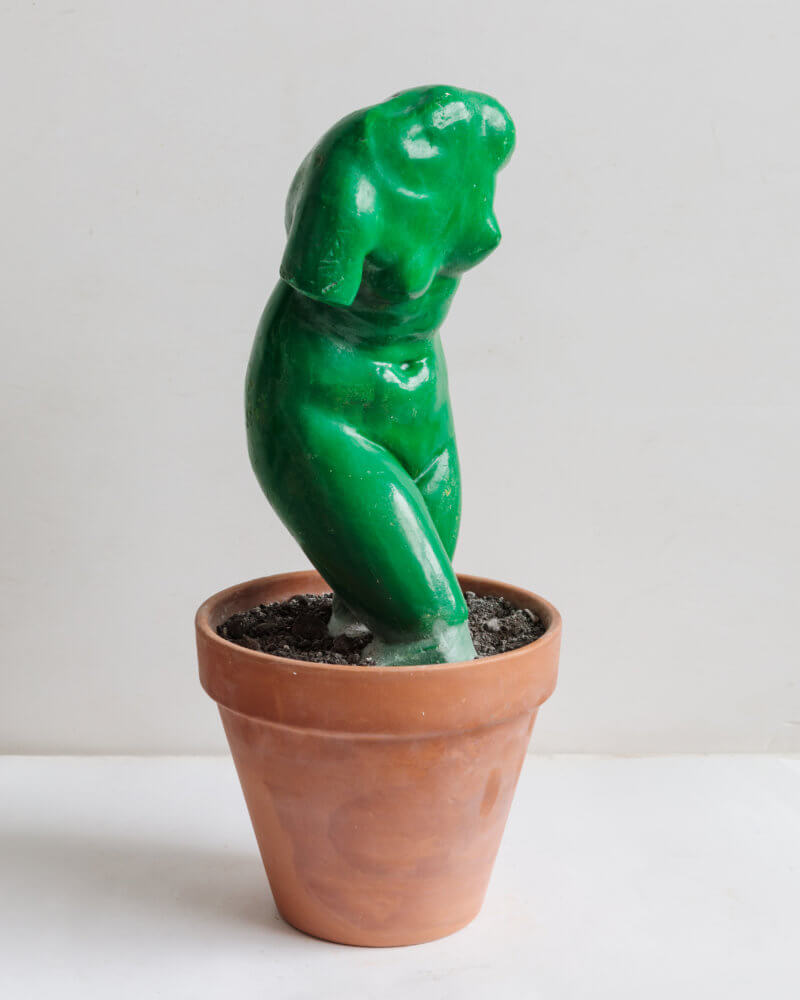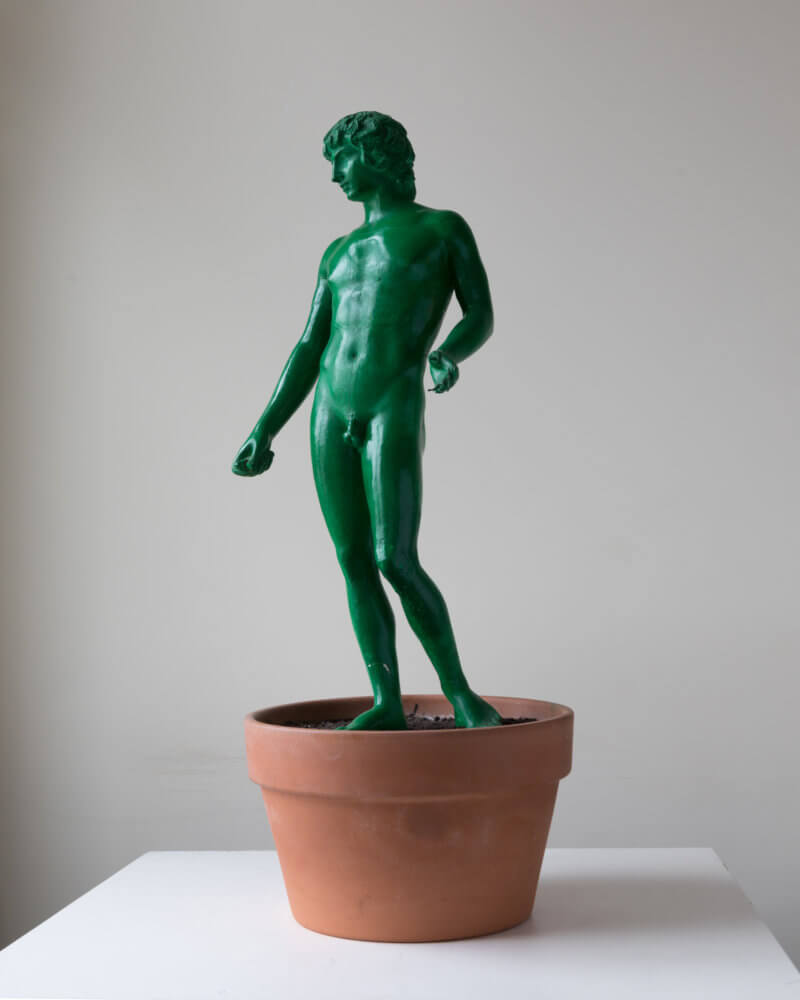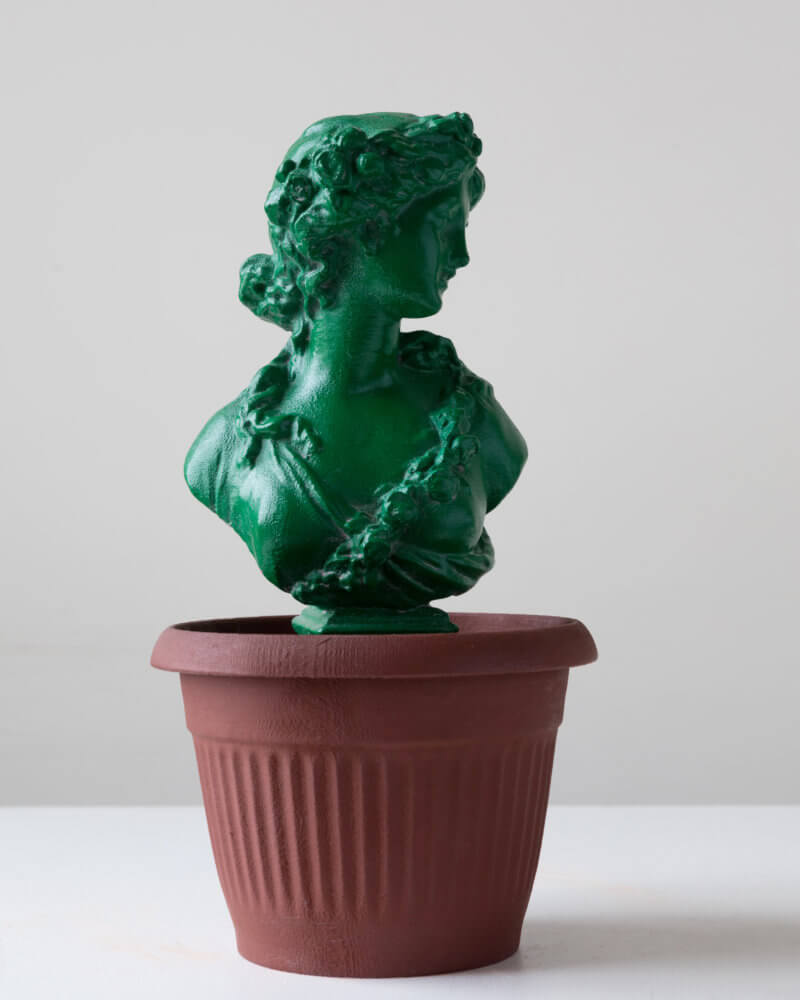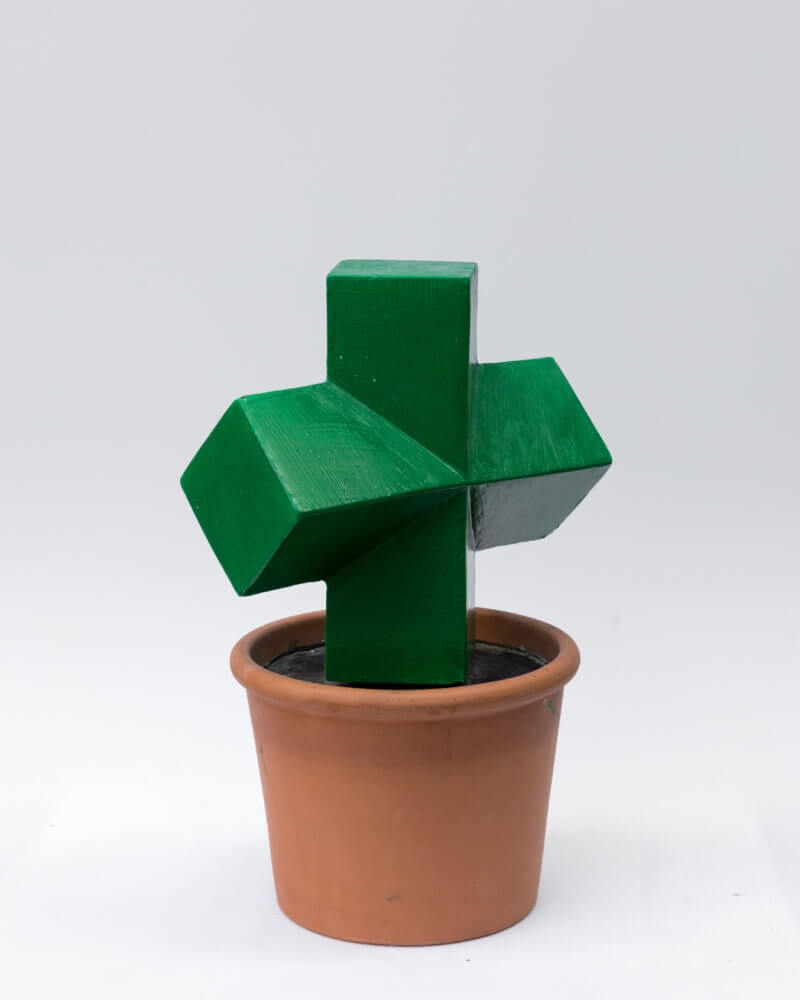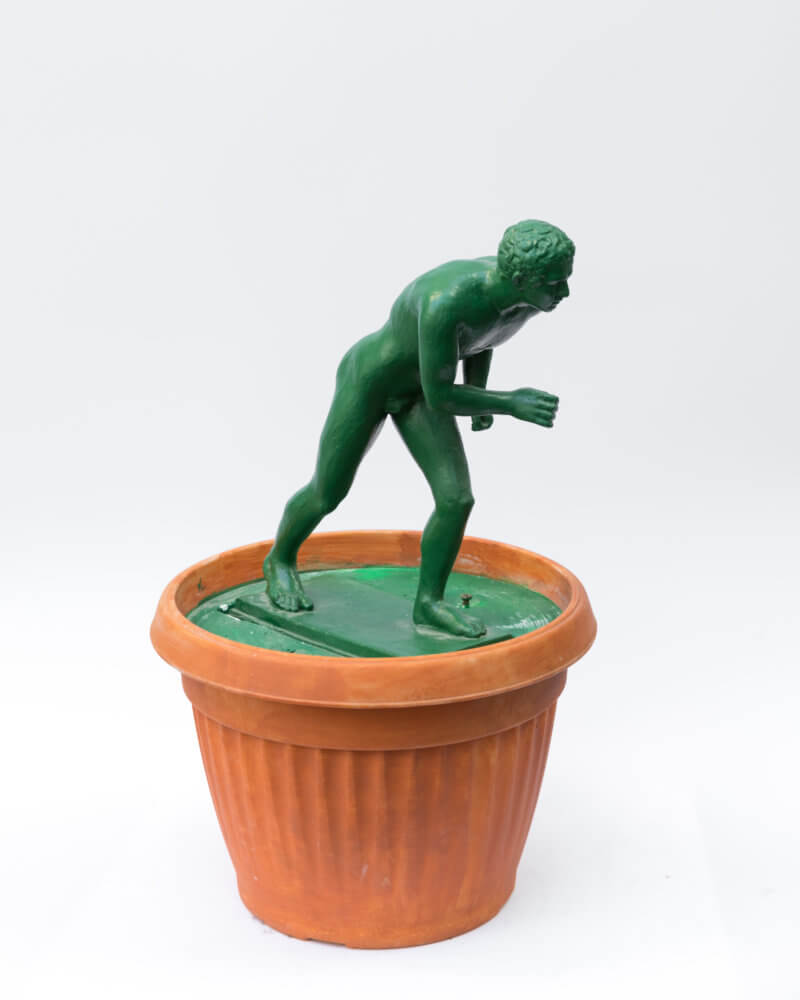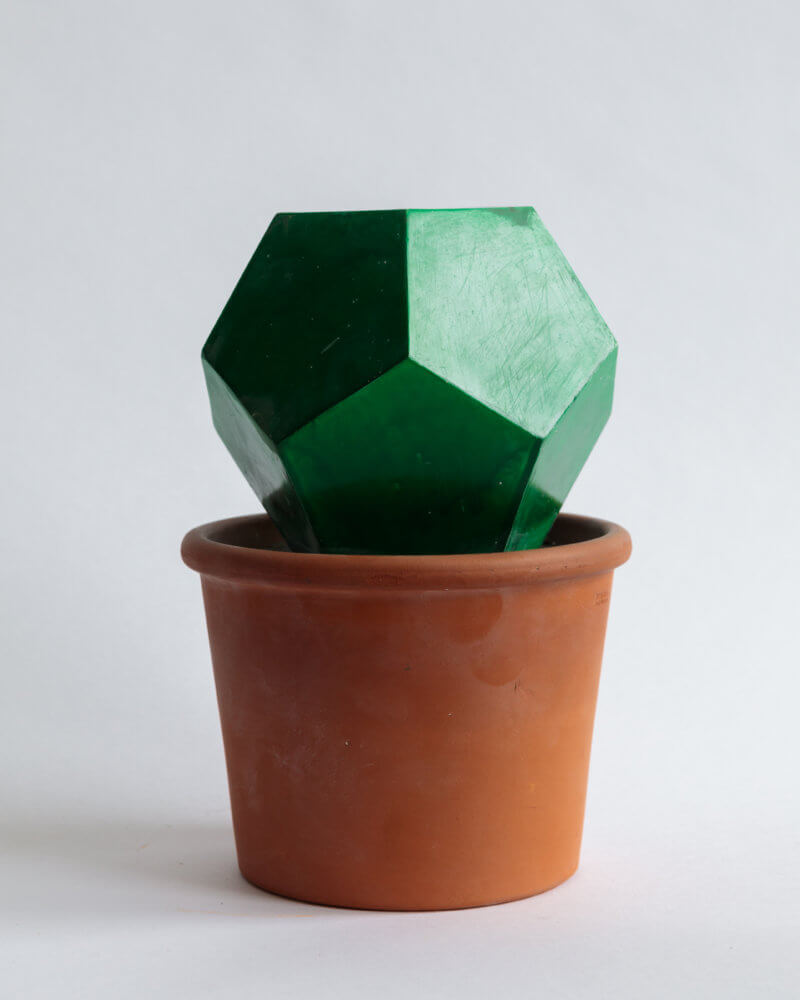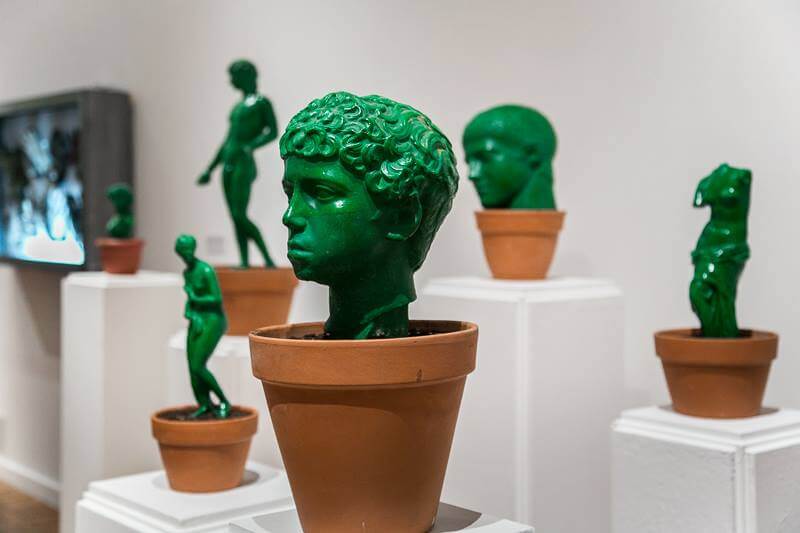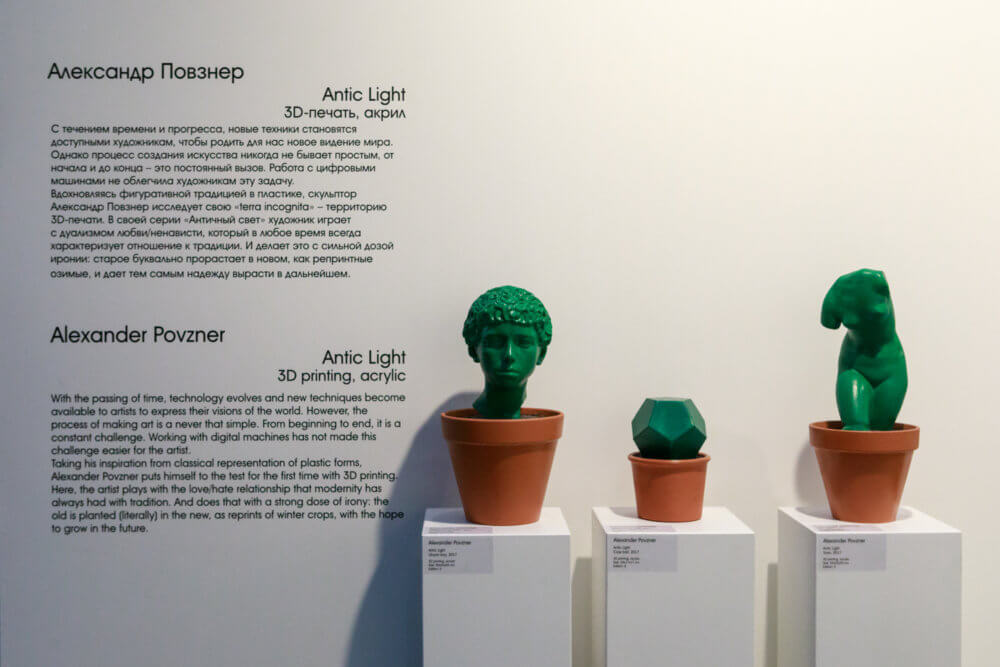Antic Light
2008 – 2017
assemblage: painted plaster, copies of antique casts, earth, ceramic pots
Alexander Povzner reflects upon the nature and functions of the traditional figurative values of sculpture under present conditions. The handicraftsman function of an academic artist got formed as a system of training and exercise aimed at creating a certain perfect object. The limit of technical perfection is attained by way of adhering to the canon. The only way to transcend this nature of academic studies is the strategy of detachment, a look from the outside. The artist alienates himself from the production by using the results of someone else’s labor. Approaching the closed universe of the apprentices’ workshop guild, he acquires sculptures already made by students who reproduce the standards of classical exercises on antique topics. Thus, Alexander Povzner chooses the “readymade path.”
The stale mythological plots have the same function within the educational environment as pulp fiction that people read in subway—acquiring the skills of cultural (artistic) competence. The duplicates of various types of beauty are the first step on the path from small to great things. Subsequently, the anonymous apprentices will switch to the monumental plastic forms, thereby totalizing the meaning of an aesthetic statement.
The contemporary antique sculpture’s set of tools has reduced its status to the level of a “pocket-size” format of culture industry.
The artist ironically emphasizes the decorative function of antique sculpture as he plants the acquired readymades in soil-filled pots and paints them green. This is a petty-bourgeois “green corner,” beautifying the middle-class houses and harmonizing the microclimate of the private space.
Starting from Duchamp, the function of readymades has consisted in deforming the context of cultural artifacts’ functioning.
By placing a readymade object inside an alien environment, the artist takes it out of its habitual symbolic chain. However, the symbolic break occurs not only on the level of meanings; such gesture releases the usurped objects of production from their rotating within culture in a mutual cover-up mode. The artist legitimizes the very act of labor. The worker’s hands acquire a meaning to their creativity. The situation of a new context not only liberates the objects from their marginal status, but also gives certain freedom to those who produce them.
Sasha Povzner’s readymades bear a liberating charge for the whole guild of the apprentices, the unemployed classical artists who in fact remain workers and handicraftsmen serving the abandoned Soviet system of academic art.
Sasha is looking for ways of a possible break out from the infinite dysfunctional system of antique sculpture production that acts as an “HR manager” for the artists.
Planting the readymades in flowerpots, he finds a peculiar way to overthrow the utopian ideals of agrarian culture. The vital, fertile function of agriculture is ironically transferred to the situation of artificial domestic floriculture. The escape is a symbol of agrarian culture, crop yielding, and the creative nature of labor; but being brought down to the microcosmic level of a flowerpot, it turns into a petty-bourgeois beautification of everyday life. Antique sculptures become our domestic flowers, standing cozily somewhere on the window sill, this being the only form in which they can exist in contemporary culture.
Ancient art, during the centuries of endless reflections, mutated in the Soviet period down to the level of a terse method and lost its denotative characteristics. The artist liberates the sculptures by planting them in a new soil; at the same time, they thereby land in a new situation of captivity. The desire to pull the antiquity out of the vicious circle of technological reproduction practically turns into narcissistic exploitation: a tamed and cultivated houseplant possesses the maximum extent of availability and is always at hand. The readymades suspend the dilemma of the past (as the original) and the future (as a series of infinite copies) in a certain perfect moment in the present, with its course literally measured with a clock. Antique sculptures are liberated from their slavish condition; planted in the pots, they have not blossomed yet, but neither have they drooped. Their embryonic state represents a definite moment of expectation and the suspension of time.
Maria Chekhonadskikh
View of the “Museum of modern art: Department of labor and employment” exhibition. The New Tretyakov Gallery, Moscow, Russia, 2013
View of Shaltai Editions Gallery booth.
Cosmoscow Art Fair, Moscow, Russia, 2017
Specially for Shaltai Edition
3D printing, acrylic paint
